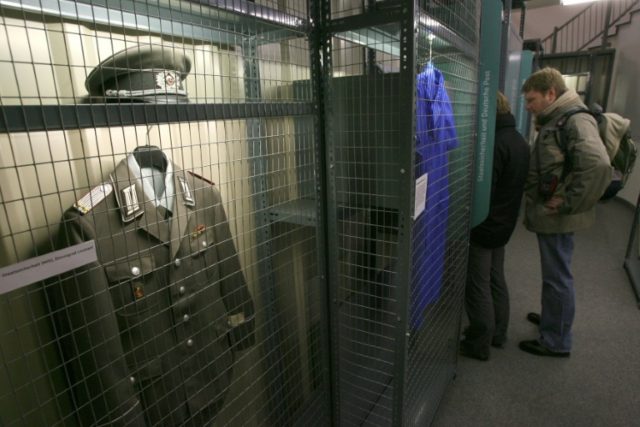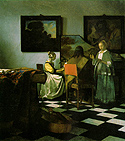Reward offered for information on German treasure robbery
BERLIN (AP) — German authorities are offering a 500,000-euro ($550,000) reward for information leading to the recovery of 18th century jewels snatched from a unique collection in Dresden or the arrest of the thieves.A large diamond brooch, a diamond epaulette and other treasures were taken from Dresden’s Green Vault early Monday morning.
A 40-member investigating commission is working on the robbery.
The Green Vault is one of the world’s oldest museums. It was established in 1723 and contains the treasury of Augustus the Strong of Saxony, comprising around 4,000 objects of gold, precious stones and other materials.
Art Hostage Comments:
The tiny reward offered makes authorities look stupid.
First, the billion dollar value, although perhaps too high, means the reward offered is 0.05% and also the 49 ct "Dresden White" diamond is worth more in the Underworld than the total reward offered.
Furthermore, the cushion shape of the "Dresden White" makes it easier to re-cut and a reduction from 49ct to say, 35ct would disguise it enough for resale on the legitimate market for much, much more than the $550,000 reward offered for the whole stolen haul, seventeen pieces.
The Dresden White is by far the most valuable single item stolen. Augustus the Strong, the 18th century Prince-Elector of Saxony who founded the Green Vault, is said to have been so enraptured by the diamond he paid $1m for it — a fabulous sum at the time.
When a huge deep blue diamond known as the French Blue was stolen from the French government following King Louis XVI's attempt to flee the country during the French Revolution, it was recut from 67.125 carats to 45.52 carats, which in turn became known as the Hope Diamond.
It would have been far better to offer a "Substantial" reward leaving the actual figure as a matter of debate and a way to attract leads.
If, as suspected, the Remmo family are involved, if not the actual heist, then certainly the following handling of the Dresden Green Vault haul, then offering such a tiny reward might encourage the current handlers to break up and sell the whole haul on the black market, destroying the jewels forever.
Much better to replicate the Gardner Museum and offer a $10 million reward, thereby making the Dresden Green Vault haul worth much more as it is, rather than broken apart.
By offering $550,000 reward for all seventeen Dresden Green Vault pieces, authorities have given Underworld figures, such as the Remmo family a price benchmark, whereby if they offer $3-5 million for the total Dresden Green Vault haul, they will be the buyers.
An Underworld offer of $1 million for the "Dresden White" alone would secure it for Underworld figures such as the Remmo family.
To be continued..............................................
Burglars hit East German secret police museum in Berlin

Berlin (AFP) – Burglars broke into Berlin’s Stasi Museum, which
showcases items of East Germany’s hated secret police, making off with
collectible medals and gold jewellery, authorities said Sunday, days
after a spectacular diamond heist in Dresden.
The robbers broke in through a window on the first floor, “smashed several showcases, and stole medals and jewellery”, said police in a statement.
They made off with their spoils undetected.
The time of the raid was unclear but a museum employee found showcases smashed in the exhibition rooms on Sunday morning.
Museum director Joerg Drieselmann told the Tagesspiegel daily that among the medals taken were a gold Patriotic order of Merit, an Order of Karl Marx — the highest honour awarded in the former communist East Germany and an Order of Lenin.
Stolen jewellery included rings and a watch, he said.
The items were confiscated by the Stasi from private individuals.
After the collapse of the communist regime, many items were returned to their owners. But some which remained unclaimed were on loan to the Stasi Museum as part of its exhibition.
“These are not huge treasures. But we are a history museum and don’t expect people to break in,” the museum chief was quoted as saying.
The latest robbery came hot on the heels of a brazen heist at the Green Vault museum in Dresden’s Royal Palace on November 25.
Having sparked a partial power cut before breaking in through a window, the thieves stole priceless 18th-century diamond jewellery — including a famous 49-carat Dresden white — from the collection of the Saxon ruler August the Strong.
Police are still hunting four suspects, and have offered half a million euros ($550,000) as a reward for information leading to an arrest or recovery of the stolen goods.
Investigators are also in contact with colleagues in Berlin to explore possible connections to a similar heist in the capital two years ago.
In 2017, a 100-kilogramme (220-pound), 24-karat giant gold coin was stolen from Berlin’s Bode Museum.
Four men with links to a notorious Berlin gang were later arrested and put on trial.
The coin has never been recovered, and fears are growing that the Dresden treasures will also remain lost forever.
Shaken by the loss, Germany’s culture minister Monika Gruetters this week called for a national conference on museum security.
“We need to look at how museums can protect their objects from such brutal activities while still being accessible to the public in the normal way,” she said.
The robbers broke in through a window on the first floor, “smashed several showcases, and stole medals and jewellery”, said police in a statement.
They made off with their spoils undetected.
The time of the raid was unclear but a museum employee found showcases smashed in the exhibition rooms on Sunday morning.
Museum director Joerg Drieselmann told the Tagesspiegel daily that among the medals taken were a gold Patriotic order of Merit, an Order of Karl Marx — the highest honour awarded in the former communist East Germany and an Order of Lenin.
The items were confiscated by the Stasi from private individuals.
After the collapse of the communist regime, many items were returned to their owners. But some which remained unclaimed were on loan to the Stasi Museum as part of its exhibition.
“These are not huge treasures. But we are a history museum and don’t expect people to break in,” the museum chief was quoted as saying.
The latest robbery came hot on the heels of a brazen heist at the Green Vault museum in Dresden’s Royal Palace on November 25.
Having sparked a partial power cut before breaking in through a window, the thieves stole priceless 18th-century diamond jewellery — including a famous 49-carat Dresden white — from the collection of the Saxon ruler August the Strong.
Police are still hunting four suspects, and have offered half a million euros ($550,000) as a reward for information leading to an arrest or recovery of the stolen goods.
Investigators are also in contact with colleagues in Berlin to explore possible connections to a similar heist in the capital two years ago.
In 2017, a 100-kilogramme (220-pound), 24-karat giant gold coin was stolen from Berlin’s Bode Museum.
The coin has never been recovered, and fears are growing that the Dresden treasures will also remain lost forever.
Shaken by the loss, Germany’s culture minister Monika Gruetters this week called for a national conference on museum security.
“We need to look at how museums can protect their objects from such brutal activities while still being accessible to the public in the normal way,” she said.



No comments:
Post a Comment